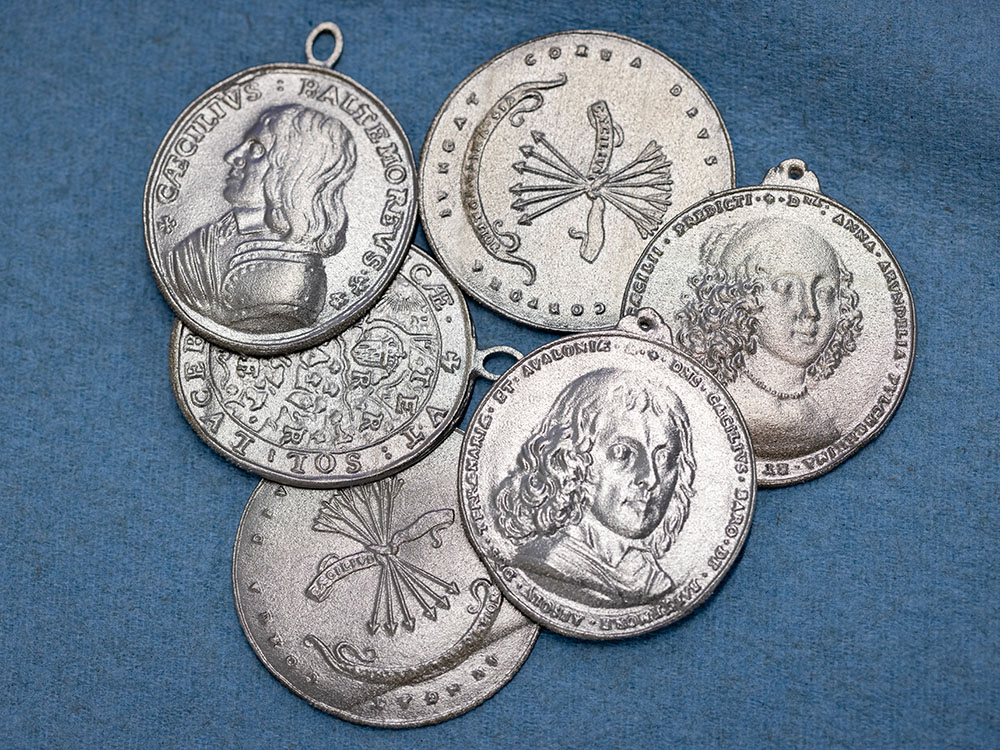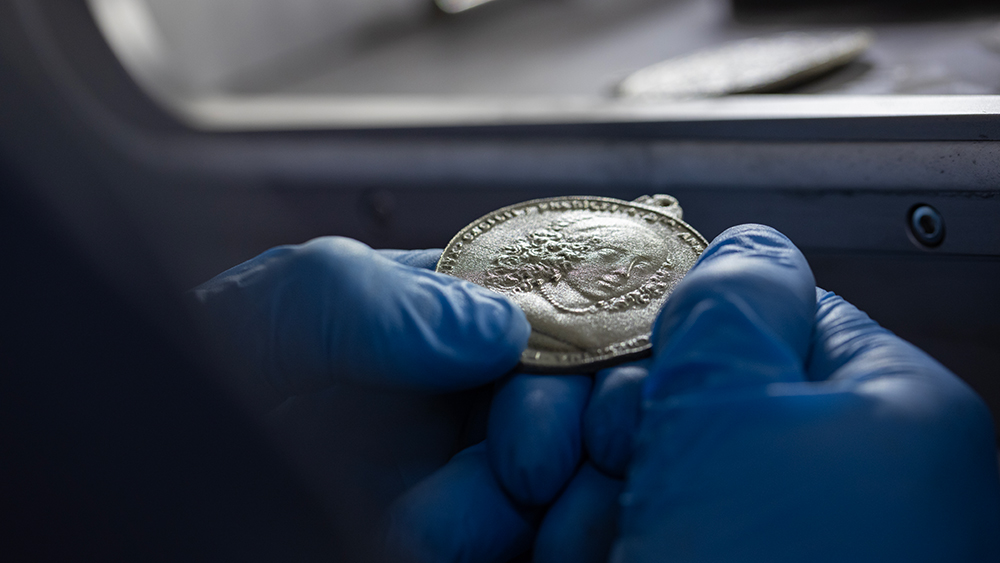Peace Medal Collaboration Amplifies State’s Tribal History
A collaboration that brings new life to historical artifacts continues between the Piscataway tribe—on whose ancestral lands the University of Maryland sits—and Maryland Engineering. Over the last year, Piscataway tribal member and historian Mario Harley has been working with the Clark School’s Terrapin Works makerspace labs to create 3D-printed replicas of silver peace medals that colonists presented to Native leaders in the 1600s and 1700s. “The peace medal replicas are a physical remnant that adds credibility to our oral history and allows us to better tell our story from a tribal perspective,” Harley says. “We have been able to go to locations within the state—libraries and cultural organizations—and using these replicas talk about the history of the medals and their national significance.”
Over the summer, Terrapin Works ran another print job, producing replicas of the 1652 Calvert Peace Medal—the first peace medal given to Indigenous people by the colonists, according to Harley—which pictures first proprietor of Maryland Cecil Calvert on one side and his wife Anne Arundell on the other. The batch of medals is bound for the new Maryland Heritage Interpretive Center at Historic St. Mary’s City, which will serve as a visitor center and interactive museum when it opens in 2026. The center’s exhibits include those being designed in collaboration with the Piscataway Conoy Tribe and the Piscataway Indian Nation. “We are typically able to talk with 1,000 or maybe 1,500 people per year,” Harley says. “Having this peace medal displayed at Historic St. Mary’s City means hundreds of students and other visitors a day will be able to learn more about this aspect of early Maryland colonial history.” It’s an eye-opening history lesson for most who hear it, says Harley, who is committed to partnering with UMD and other organizations around the state to broadcast these stories. He describes the 1652 peace treaty as a land cession agreement under the auspices of a relationship of collaboration and peace—an “omen for what was to come” in the 1700s and 1800s across North America. In addition to telling this important history at community organizations, Harley and a group of 10 or so Piscataway citizens instruct students in the College Park Scholars and University Honors programs through a course called “Where the Waters Blend,” which explores the history, traditions, and contemporary issues of Maryland’s Indigenous people, particularly the Piscataway. The medal hunt far from over, ongoing research has led to the identification of three additional peace medals Harley is currently tracking down, which he hopes to have 3D-printed for posterity and educational purposes: one medal was associated with the end of the French and Indian War and given to Native Americans by the British, another with the Treaty of Easton in Pennsylvania, and another with the Treaty of Greenville in Ohio that ended the Northwest Indian War between several Native American tribes and the U.S. On history, Harley takes the long view. “My ancestors have called the land I grew up on home for the last 15,000 years,” he says. “Even though the last 400 have been challenging, we’re still here.”
Manufacturing MomentDavid Kriesberg ’16, M.Eng ’19 and Bobby Alban ’25 of Terrapin Works provide the rationale for 3D-printing such a project. “Recreating point cloud scans that have details of about 50 micron out of a super alloy or heavy metal alloy is very difficult to do in the manufacturing process, especially subtractively,” says Alban. “But with additive manufacturing, we’re able to create unique and complex geometries with relative ease.” Manufacturing specs:
Related Articles: November 3, 2025 Prev Next |




